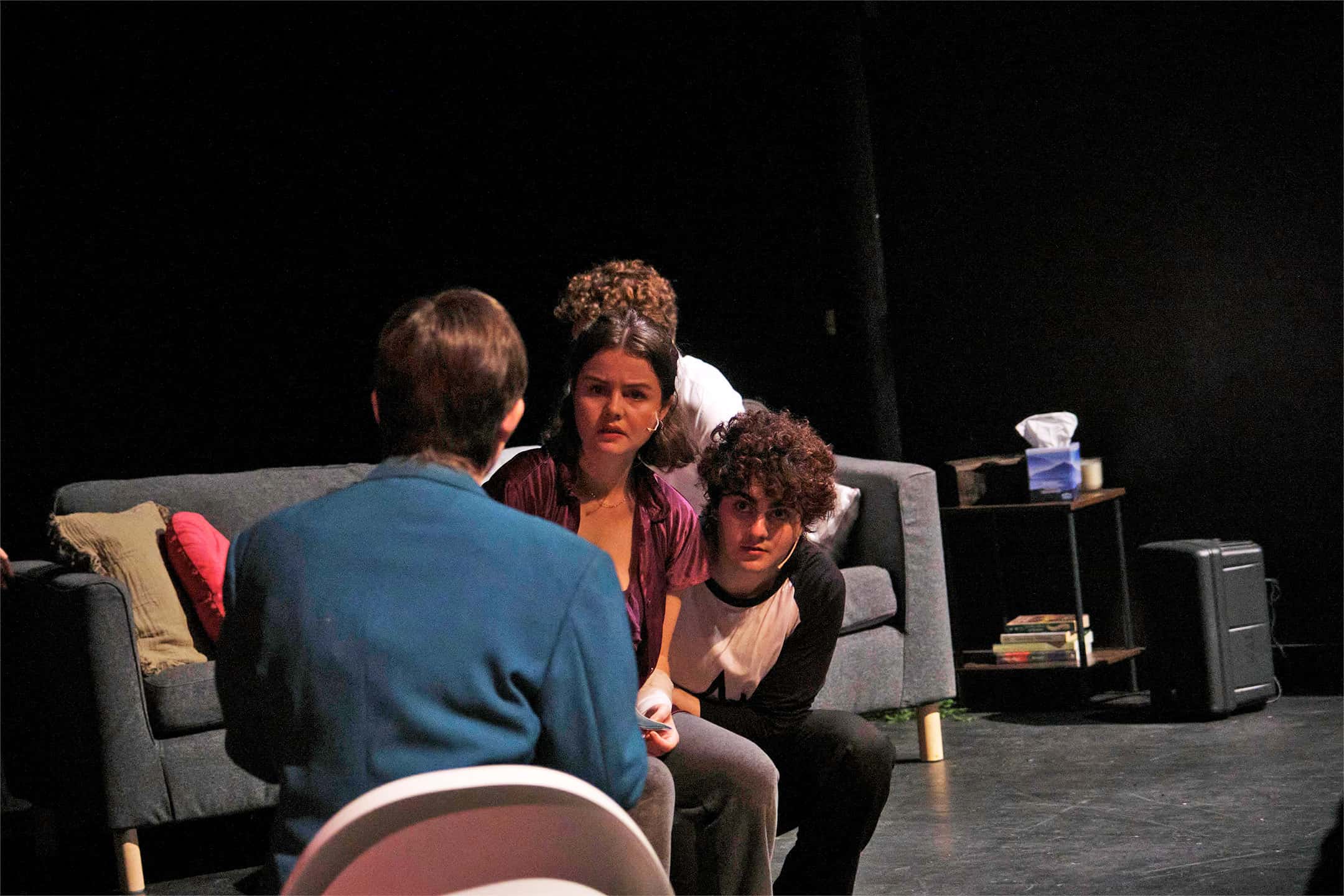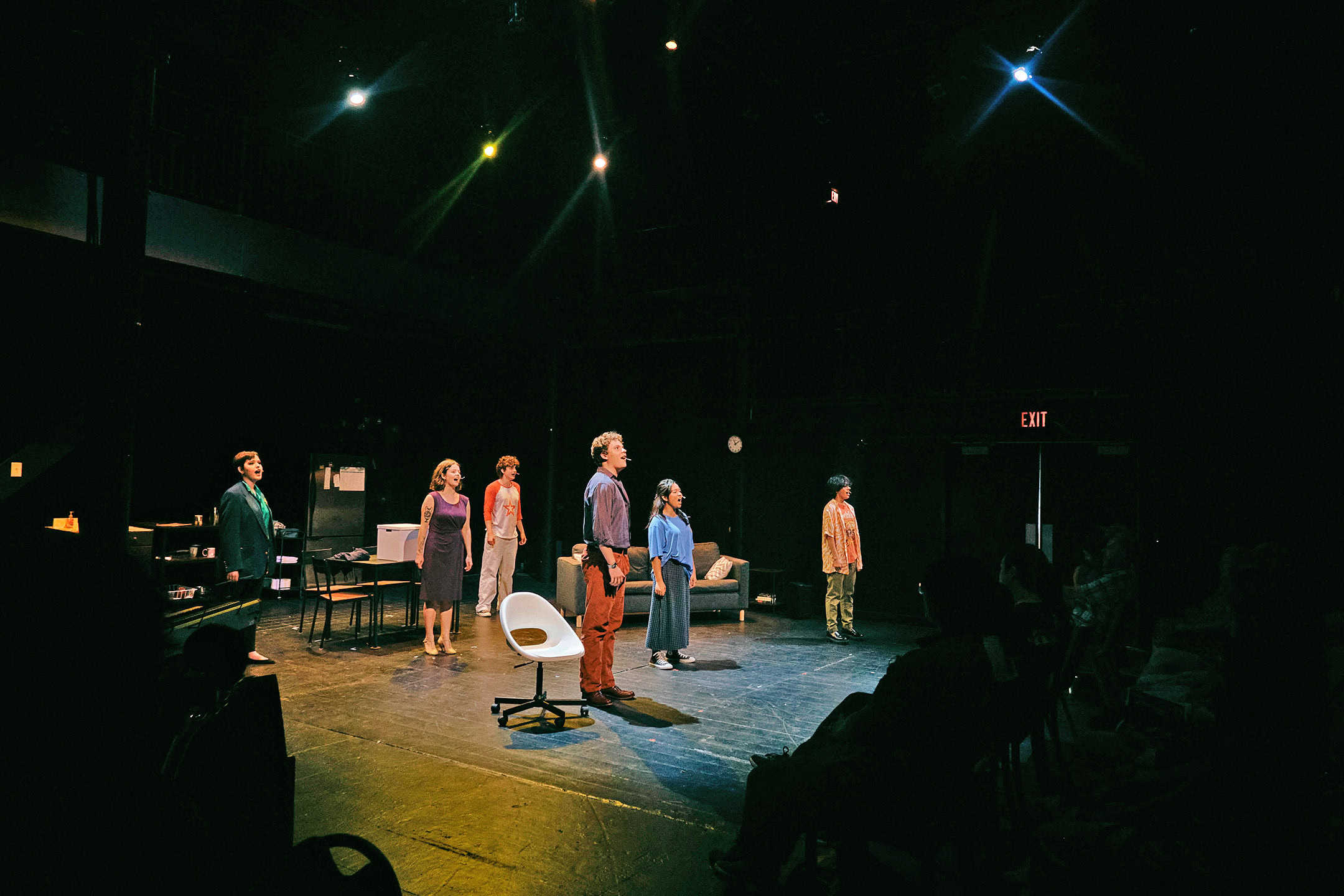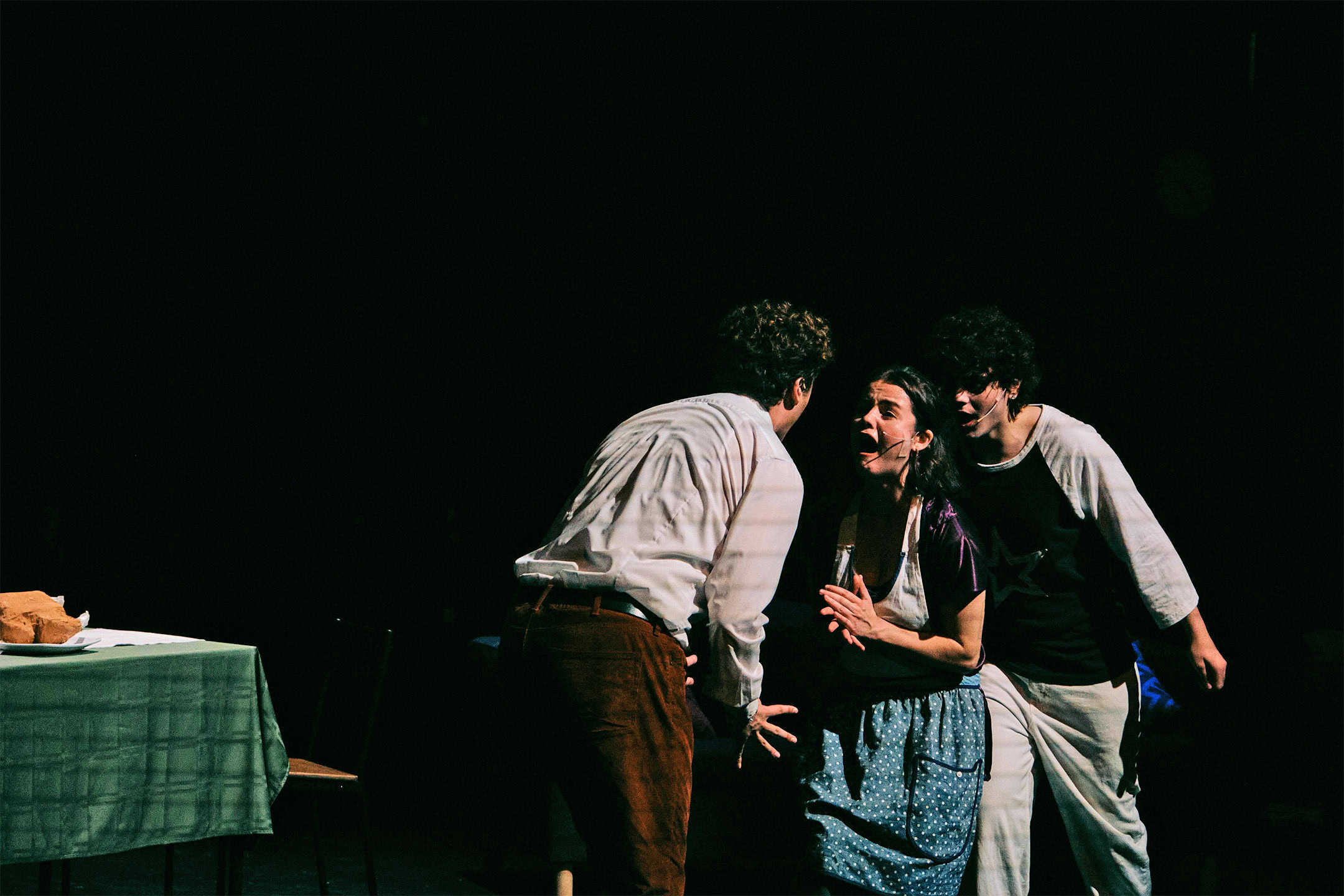Content warning: This article discusses substance use, bipolar disorder, and PTSD.
Art is not in the music or the story, but in the spaces between.
Sitting in the basement of the Faculty of Music with the cast of Next to Normal, I understood that art is not in the music or the story, but in the spaces between. When we discussed the story’s themes and pitfalls, my impressions were that they were charismatic, personable, and multi-faceted actors and students who were deeply passionate about their art.
Ahead of Trinity College Dramatic Society and Victoria College Drama Society’s production at Theatre Passe Muraille from September 12–15, I sat in rehearsal ready to watch an emotional journey through the struggles of mental health. Soon, however, I was shocked by the jaunty and upbeat music blaring from the orchestra behind me.
By the time the second song played, I understood what the cast had been trying to convey during our interviews. The show is engaging not just because it is fantastical or theatrical, but because it is real. The music and drama dress up the story while also laying it bare.

COURTESY OF AUDREY PERSAUD
A raw and unsettling experience
The cast’s inimitable storytelling resonates with the audience. Alongside the sounds of their incredible voices, the characters’ poor decisions, bad judgment, and awkwardness imbue the audience with a feeling of ‘shit, I’ve been here before,’ — making their tragedy ours.
The stage work was partially done by Theatre Passe Muraille: a spectacle described by the play’s director Paul Meyer as “walk[ing] into the building and thinking, ‘yeah, this is it.’” Much of the heavy lifting happened before the crew stepped foot into the historic space, and set designer Aria Kowal took over.
Meyer said that his job as director was to create a space where the actors could choose how to feel, leading to varying narrative interpretations that leave the audience hanging on every word, spoken or unspoken. Technical director Samara Tower and stage manager Caitlyn Grant were present during both the rehearsal and the show, building the atmosphere to entrench the audience in an intense emotional experience.
Minimalist yet evocative, the crew’s use of the stage and the catwalks above the stage mirrored the disjointed layers of the characters’ internal chaos. Dim and warm lighting in moments of familial intimacy become harsh and punishing as the main character Diana (Emma Kidd) descends deeper into clinical depression, guiding the audience through these mental landscapes.
The story’s soul is captured by the moment Diana performs a slow waltz into her seeming tragic end. She dances alone, eyes closed — until she is caught just in time by Gabe (Nomi Parsai), who acts as Diana’s undoing. The haunting choreography by Gabby Noga works in tandem with lighting designer Shunsho Ando Heng’s dramatic lighting and music director Jo O’Leary-Ponzo’s music to blur the line between reality and delusion.

COURTESY OF AUDREY PERSAUD
Sound and music: Conversing with emotions
As for Gabe, filling the empty space left in his character’s story is a challenging task for any actor. As only Diana can see him, Gabe’s role is unclear. Is he a villain or a spectre? The whole team worked to build his ghostly presence: changes in his shirt colour, for example, demonstrate the vilification of his omnipresence in Diana’s life, but much of his power is in his voice or lack thereof. We see this spectral significance in his silent presence in the background of the second act, during which he has been mostly eliminated from Diana’s mind through electroconvulsive therapy.
When Gabe spends much of the second act offstage, his ability to entirely fill a space reverberates with the audience as the space he used to occupy feels empty.
Vocal director Frank Yu describes this dynamic as an act of “vocal storytelling.” The sonic layers of urgency in a character’s voice as they approach the more intense moments, the ticking of a clock punctuating an intense silence, and the overwhelming energy as all characters sing at once bring the audience into Diana’s world.
Music I had originally marked as being at odds with Next to Normal’s subject matter not only disarms the audience but also performs a larger function: it leaves empty space between what is expected and what actually occurs. After expecting sombre tones during the heavier moments, I was shocked by the upbeat melodies which allowed the lyrics’ darker undercurrent to hit harder.
Mired in misconceptions: Discussions of mental health
Diana and her family maneuver through her borderline personality disorder diagnosis, which spirals outward to affect every part of her life. She neglects her daughter, becomes estranged from her sometimes heavy-handed but always well-meaning husband, and gives in to her delusions caused by her BPD. During pre-show interviews, the cast detailed how they trained with the Centre for Addiction and Mental Health, staff at Sunnybrook Hospital, and intimacy coordinator Corey Tazmania to sensitively and realistically portray Diana’s struggles.
On September 15, halfway through the first act on closing night, I found myself crying into my notebook, having disposed of my judgments. Despite my initial knee-jerk reaction, the cast are not unaware of the weight they carry when they strap their characters’ histories to their chests.
Striking a delicate balance between dramatic intensity and moments of quiet and lonely sadness, Trinity and Victoria Colleges’ drama societies made Next to Normal their own, demonstrating what they understood from the beginning: a story told not just in words or song, but in the spaces between.
Disclaimer: The chair of The Varsity’s Board of Directors, Paul Meyer, was the Director of Next to Normal.



No comments to display.